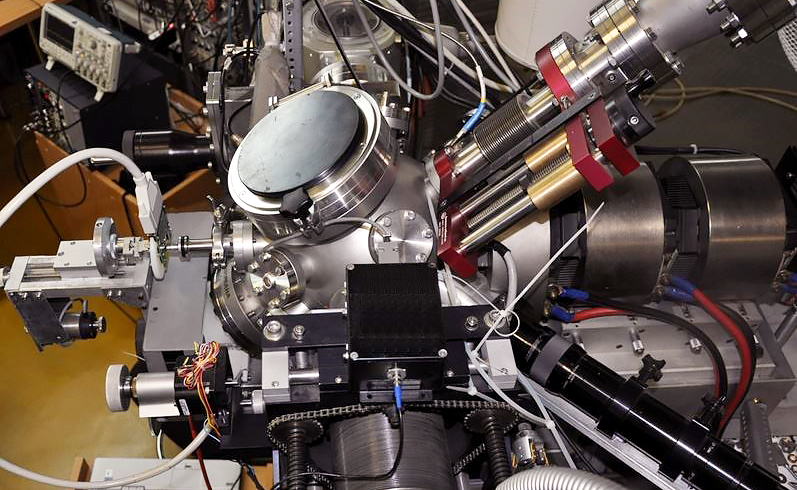
Upgrades at Rudjer Boskovic Institute
Jennifer Toes, 22/09/2017

Figure 1: In air test of CMS silicon pixel detector using 6 MeV proton microbeam (Image: RBI)
Since 2015, the Rudjer Boskovic Institute (RBI) in Croatia has undergone a series of upgrades at its tandem accelerator facility in an effort to increase its capabilities for potential users. As part of the AIDA-2020 Transnational Access scheme, the facility provides access to researchers across Europe to make use of its unique equipment.
Most user projects which have made use of the scheme have required low energy ion beams in the MeV energy range for testing the charge collection properties of semiconductor detectors.
RBI is able to accelerate a wide range of ions (from protons to gold) and offers a varying level of energies (1.0 and 6.0 MeV) via the two tandem accelerators available. As such, detectors with a range of different thicknesses can be studied, ranging from those measuring a few hundred nanometers, up to 1mm.
Whilst most studies have previously been performed in a vacuum, recently the facility introduced an in-air microbeam, which is particularly useful for studies where detector structures cannot be placed into the vacuum chamber (Figure 1).
In addition, RBI has recently equipped itself with a variety of different temperature stages. This includes a sample cooling stage, which offers temperatures usually achieved through the use of liquid nitrogen, as well as a heating stage, which can increase up to 300’C. The temperature system offers reliable control of detector temperatures during testing.
In addition, the facility commissioned a new dual beam ion microprobe, which is of particular interest for studies investigating radiation hardness. The microprobe means detectors can now be irradiated using ion beams from the 6 MV tandem accelerator, whilst simultaneously probing the charge transport properties with protons from its 1 MV counterpart.
Finally, the facility has installed new pulse digitizer hardware, which enables high timing resolution transient current technique (TCT). Compared to conventional uses of laser pulses, the ion beam TCT allows the study of detector structures which are often buried deep within the equipment, such as chips interconnections.
These recent upgrades allow users to not only take faster measurements but also obtain broader information than previously. These innovations aim to not only increase the scientific quality of the lab’s output, but also appeal to new users across Europe.
For more information on the facilities available at RBI and to apply for access under the AIDA-2020 Transnational Access scheme, please visit the RBI information page on the AIDA-2020 project’s website.
